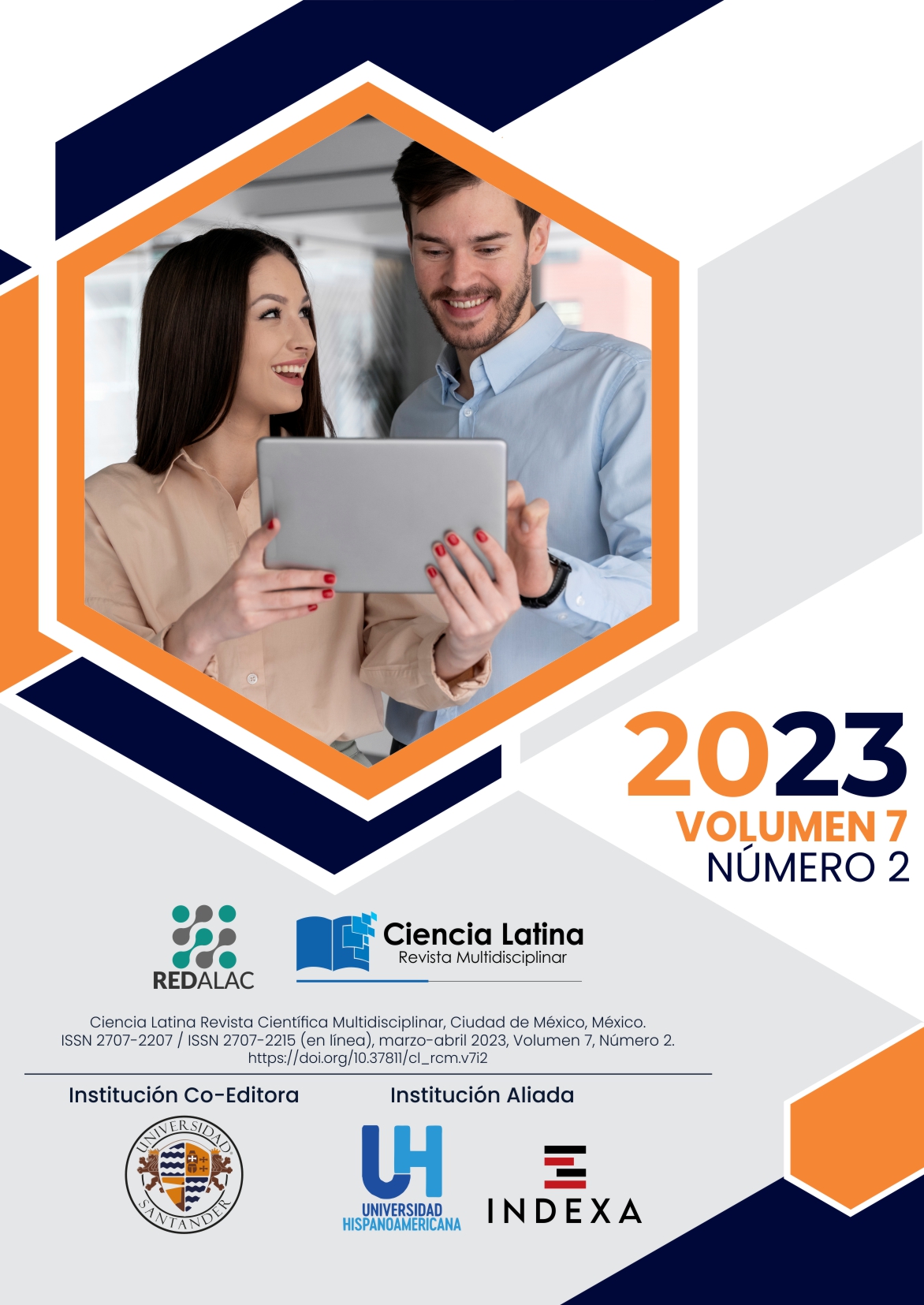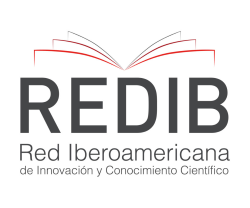Evaluación de las fases del ciclo estral de la rata mediante frotis vaginales y mediciones hormonales
Resumen
El ciclo ovárico es el proceso de selección, maduración y crecimiento folicular hasta la ovulación y la preparación del útero para la gestación. Ocurre mediante la intercomunicación entre los ovocitos, las células de la granulosa, células de la teca y diversas células del sistema inmune y endócrino. Las funciones celulares están reguladas por las hormonas hipofisiarias: luteinizante (LH) y folículo estimulante (FSH), junto con los esteroides ováricos: estrógenos, andrógenos y progestágenos. Las variaciones en las concentraciones hormonales generan cambios físicos, cognitivos y emocionales en las hembras. Por lo que, al incluirlas como modelos en los protocolos de investigación, resulta necesario evaluar las fases y duración de los ciclos, pues estas variables pueden sesgar los resultados. Para el seguimiento de las fases se han desarrollado diferentes métodos, siendo la evaluación de la citología vaginal el más utilizado aunque poco preciso. Por el contrario, las mediciones hormonales séricas, urinarias, fecales o salivales son más precisas, pero costosas y tardadas. Consecuentemente, lo ideal sería la combinación de varias técnicas de evaluación. Sin embargo, la decisión dependerá de la naturaleza de cada experimento. Esta revisión describe, los mecanismos fisiológicos del ciclo estral y las hormonas que actúan en cada etapa. Describe el ciclo ovárico de la rata adulta, ya que es la especie más usada en el laboratorio como modelo experimental, incluye la evaluación de los cambios celulares del epitelio vaginal, describiendo las principales técnicas de tinción. Por último, refiere los métodos de medición hormonal más comunes con sus ventajas y desventajas.
Descargas
Citas
Albertini, D. F. (2015). The Mammalian Oocyte. In Knobil and Neill’s Physiology of Reproduction: Two-Volume Set (Vol. 1). https://doi.org/10.1016/B978-0-12-397175-3.00002-8
Allen, E., & Doisy, E. A. (1923). An ovarian hormone. Journal of the American Medical Association, 81(21), 1808. https://doi.org/10.1001/jama.1923.02650210074033
Antonov, A. L. (2017). Application of exfoliative vaginal cytology in clinical canine reproduction – a review. Bulgarian Journal of Veterinary Medicine, 20(3), 193–203. https://doi.org/10.15547/bjvm.997
Aydin, S. (2015). A short history, principles, and types of ELISA, and our laboratory experience with peptide/protein analyses using ELISA. Peptides, 72, 4–15. https://doi.org/10.1016/j.peptides.2015.04.012
Barbieri, R. L. (2014). The endocrinology of the menstrual cycle. In Z. Rosenwaks & P. M. Wassarman (Eds.), Human Fertility (Vol. 1154, Issue April 2014). Springer New York. https://doi.org/10.1007/978-1-4939-0659-8
Bekyürek, T., Lima, N., & Bayra, G. (2002). Diagnosis of sexual cycle by means of vaginal smear method in the chinchilla (Chinchilla lanigera). Laboratory Animals, 36(1), 51–60. https://doi.org/10.1258/0023677021911768
Berson, B. S. A., & Yalow, R. S. (1959). Quantitative aspects of the reaction between insulin and insulin-binding antibody. The Journal of Clinical Investigation, 38(11), 1996–2016.
Cinquanta, L., Fontana, D. E., & Bizzaro, N. (2017). Chemiluminescent immunoassay technology: what does it change in autoantibody detection? Autoimmunity Highlights, 8(1). https://doi.org/10.1007/s13317-017-0097-2
Cora, M. C., Kooistra, L., & Travlos, G. (2015). Vaginal Cytology of the Laboratory Rat and Mouse:Review and Criteria for the Staging of the Estrous Cycle Using Stained Vaginal Smears. Toxicologic Pathology, 43(6), 776–793. https://doi.org/10.1177/0192623315570339
De Tomasi, J. B., Crespo, A. A., & Crespo, A. F. (2012). Desarrollo folicular en el ovario. Revista Salud Quintana Roo, 5(19), 12–18. https://www.imbiomed.com.mx/articulo.php?id=82826
Dorgan, J. F., Fears, T. R., McMahon, R. P., Aronson Friedman, L., Patterson, B. H., & Greenhut, S. F. (2002). Measurement of steroid sex hormones in serum: A comparison of radioimmunoassay and mass spectrometry. Steroids, 67(3–4), 151–158. https://doi.org/10.1016/S0039-128X(01)00147-7
Dowsett, M., & Folkerd, E. (2005). Deficits in plasma oestradiol measurement in studies and management of breast cancer. Breast Cancer Research, 7(1), 1–4. https://doi.org/10.1186/bcr960
Duffy, D. M., Ko, C., Jo, M., Brannstrom, M., & Curry, T. E. (2019). Ovulation: Parallels with inflammatory processes. Endocrine Reviews, 40(2), 369–416. https://doi.org/10.1210/er.2018-00075
Evans, H. M., & Long, J. A. (1922). Characteristic Effects upon Growth, Oestrus and Ovulation Induced by the Intraperitoneal Administration of Fresh Anterior Hypophyseal Substance. Proceedings of the National Academy of Sciences, 8(3), 38–39. https://doi.org/10.1073/pnas.8.3.38
Falender, A. E., Shimada, M., Lo, Y. K., & Richards, J. A. S. (2005). TAF4b, a TBP associated factor, is required for oocyte development and function. Developmental Biology, 288(2), 405–419. https://doi.org/10.1016/j.ydbio.2005.09.038
Farage, M. A., Miller, K. W., & Sobel, J. D. (2010). Infectious Diseases : Research and Treatment Dynamics of the Vaginal Ecosystem-Hormonal Influences. Infectious Diseases: Research and Treatment, 3, 1–15.
Faupel-Badger, J. M., Fuhrman, B. J., Xu, X., Falk, R. T., Keefer, L. K., Veenstra, T. D., Hoover, R. N., & Ziegler, R. G. (2010). Comparison of liquid chromatography-tandem mass spectrometry, RIA, and ELISA methods for measurement of urinary estrogens. Cancer Epidemiology Biomarkers and Prevention, 19(1), 292–300. https://doi.org/10.1158/1055-9965.EPI-09-0643
Fitzpatrick, S. L., & Richards, J. A. S. (1994). Identification of a cyclic adenosine 3′, 5′-monophosphate-response element in the rat aromatase promoter that is required for transcriptional activation in rat granulosa cells and R2C leydig cells. Molecular Endocrinology, 8(10), 1309–1319. https://doi.org/10.1210/mend.8.10.7854348
Frederick, J. L., Shimanuki, T., & DiZerega, G. S. (1984). Initiation of angiogenesis by human follicular fluid. Science, 224, 389–390.
Fujii, T., Hoover, D. J., & Channing, C. P. (1983). Changes in inhibin activity, and progesterone, oestrogen and androstenedione concentrations, in rat follicular fluid throughout the oestrous cycle. Journal of Reproduction and Fertility, 69(1), 307–314. https://doi.org/10.1530/jrf.0.0690307
Goldman, J. M., Murr, A. S., & Cooper, R. L. (2007). The rodent estrous cycle: Characterization of vaginal cytology and its utility in toxicological studies. Birth Defects Research Part B - Developmental and Reproductive Toxicology, 80(2), 84–97. https://doi.org/10.1002/bdrb.20106
Halasz, M., & Szekeres-Bartho, J. (2013). The role of progesterone in implantation and trophoblast invasion. Journal of Reproductive Immunology, 97(1), 43–50. https://doi.org/10.1016/j.jri.2012.10.011
Han, Y., Jiang, T., Shi, J., Liu, A., Liu, L. (2023) Review: Role and regulatory mechanism of inhibin in animal reproductive system. Theriogenology, 202, 10-20. https://doi.org/10.1016/j.theriogenology.2023.02.016
Hansen, K. R., Eisenberg, E., Baker, V., Hill, M. J., Chen, S., Talken, S., Diamond, M. P., Legro, R. S., Coutifaris, C., Alvero, R., Robinson, R. D., Casson, P., Christman, G. M., Santoro, N., Zhang, H., & Wild, R. A. (2018). Midluteal progesterone: A marker of treatment outcomes in couples with unexplained infertility. Journal of Clinical Endocrinology and Metabolism, 103(7), 2743–2751. https://doi.org/10.1210/jc.2018-00642
Ingram, B. D. L. (1959). The vaginal smear of the senile laboratory rats.
Kaushik, T., Mishra, R., Singh, R. K., & Bajpai, S. (2020). Role of connexins in female reproductive system and endometriosis. Journal of Gynecology Obstetrics and Human Reproduction, 49(6), 101705. https://doi.org/10.1016/j.jogoh.2020.101705
Le, J., Thomas, N., & Gurvich, C. (2020). Cognition, the menstrual cycle, and premenstrual disorders: A review. Brain Sciences, 10(4), 1–14. https://doi.org/10.3390/brainsci10040198
Lee, E. B., Praveen Chakravarthi, V., Wolfe, M. W., & Karim Rumi, M. A. (2021). ERβ regulation of gonadotropin responses during folliculogenesis. International Journal of Molecular Sciences, 22(19). https://doi.org/10.3390/ijms221910348
Lefièvre, L., Conner, S. J., Salpekar, A., Olufowobi, O., Ashton, P., Pavlovic, B., Lenton, W., Afnan, M., Brewis, I. A., Monk, M., Hughes, D. C., & Barratt, C. L. R. (2004). Four zona pellucida glycoproteins are expressed in the human. Human Reproduction, 19(7), 1580–1586. https://doi.org/10.1093/humrep/deh301
Liu, C. F., Barsoum, I., Gupta, R., Hofmann, M. C., & Yao, H. H. (2009). Stem cell potential of the mammalian gonad. Frontiers in bioscience (Elite edition), 1(2), 510–518. https://doi.org/10.2741/e47
Martínez, D., Correa Vidal, M., Oropesa, R., & González, O. (2014). Cuantificación simultánea de andrógenos, estrógenos, corticoides y pregnanos mediante cromatografía de gases acoplada a espectrometría de masas. Revista Cubana de Farmacia, 48(4), 550–561. http://scielo.sld.cuhttp//scielo.sld.cu
Mishra, B., Park, Y. J., Wilson, K., & Jo, M. (2015). X-linked lymphocyte regulated gene 5c-like (Xlr5c-like) Is a Novel Target of Progesterone Action in Granulosa Cells of Periovulatory Rat Ovaries. Physiology & Behavior, 5, 226–238. https://doi.org/10.1016/j.mce.2015.05.008
Owen, J. A. (1975). Physiology of the menstrual cycle. American Journal of Clinical Nutrition, 28(4), 333–338. https://doi.org/10.1093/ajcn/28.4.333
Paccola, C. C., Resende, C. G., Stumpp, T., Miraglia, S. M., & Cipriano, I. (2013). The rat estrous cycle revisited: a quantitative and qualitative analysis. Anim. Reprod, 10(4), 677–683.
Pangas, S. A., & Rajkovic, A. (2015). Follicular development. In J. D. Knobil, E. and Neill (Ed.), Physiology of reproduction (Fourth Edi, pp. 947–995). Academic Press Inc.
Reddy, P., Liu, L., Adhikari, D., Jagarlamudi, K., Rajareddy, S., Shen, Y., Du, C., Tang, W., Hämäläinen, T., Peng, S. L., Lan, Z. J., Cooney, A. J., Huhtaniemi, I., & Liu, K. (2008). Oocyte-specific deletion of pten causes premature activation of the primordial follicle pool. Science, 319(5863), 611–613. https://doi.org/10.1126/science.1152257
Richards, J. S. (1980). Maturation of ovarian follicles: actions and interactions of pituitary and ovarian hormones on follicular cell differentiation. Physiological Reviews, 60(1), 51–89. https://doi.org/10.1152/physrev.1980.60.1.51
Richards, J. (2018). The ovarian cycle. In G. Litwacl (Ed.), Vitamins and Hormones (First edit, pp. 1–18). Academic Press.
Rodriguez, A. (2011). Libro laboratorio clinico y la funcion hormonal (C. Catro Fernández, L. Rodelgo Jiménez, M. A. Ruis Ginés, & G. Ruíz Martín (eds). Asociación Castellano-Manchega de Análisis Clínicos.
Rosales Torres, A. M., & Sánchez Guzmán, A. (2008). Apoptosis en la atresia folicular y la regresión del cuerpo lúteo. Revisión. Tecnica Pecuaria En Mexico, 46(2), 159–182.
Shorr, E. (1928). A new technic for staining vaginal smears. Science, 68(1752), 87–88. https://doi.org/10.1126/science.68.1752.87
Srisuparp, S., Strakova, Z., & Fazleabas, A. T. (2001). The Role of Chorionic Gonadotropin (CG) in Blastocyst Implantation. Archives of Medical Research, 32, 627–634. https://doi.org/10.1016/s0188-4409(01)00330-7
Stanczyk, F. Z., Cho, M. M., Endres, D. B., Morrison, J. L., Patel, S., & Paulson, R. J. (2003). Limitations of direct estradiol and testosterone immunoassay kits. Steroids, 68(14), 1173–1178. https://doi.org/10.1016/j.steroids.2003.08.012
Stanczyk, F. Z., Lee, J. S., & Santen, R. J. (2007). Standardization of steroid hormone assays: Why, how, and when? Cancer Epidemiology Biomarkers and Prevention, 16(9), 1713–1719. https://doi.org/10.1158/1055-9965.EPI-06-0765
Stockard, C. R., & Papanicolaou, G. N. (1917). A rhythmical “heat period” in the guinea-pig. Science, XLVI(1176), 42–44.
Tan, X., David, A., Day, J., Tang, H., Dixon, E. R., Zhu, H., Chen, Y.-C., Khaing Oo, M. K., Shikanov, A., & Fan, X. (2018). Rapid Mouse Follicle Stimulating Hormone Quantification and Estrus Cycle Analysis Using an Automated Microfluidic Chemiluminescent ELISA System. ACS Sensors, 3(11), 2327–2334. https://doi.org/10.1021/acssensors.8b00641
Taraborrelli, S. (2015). Physiology, production and action of progesterone. Acta Obstetricia et Gynecologica Scandinavica, 94, 8–16. https://doi.org/10.1111/aogs.12771
Toral Delgado, L. (2017). Identificación del ciclo estral. BENEMÉRITA UNIVERSIDAD AUTÓNOMA DE PUEBLA.
Wang, C., Wu, J., Zong, C., Xu, J., & Ju, H. X. (2012). Chemiluminescent immunoassay and its applications. Fenxi Huaxue/ Chinese Journal of Analytical Chemistry, 40(1), 3–10. https://doi.org/10.1016/S1872-2040(11)60518-5
Wang, Q., Bottalico, L., Mesaros, C., & Blair, I. A. (2015). Analysis of estrogens and androgens in postmenopausal serum and plasma by liquid chromatography–mass spectrometry. Steroids, 99(1), 76–83. https://doi.org/10.1016/j.steroids.2014.08.02
Wuttke, W., Pitzel, L., Seidlová-Wuttke, D., & Hinney, B. (2001). LH pulses and the corpus luteum: The luteal phase deficiency (LPD). Vitamins and Hormones, 63, 131–158. https://doi.org/10.1016/s0083-6729(01)63005-x
Yen, S. S. C., Jaffe, R. B., & Barbieri, R. L. (2019). Reproductive Endocrinology: physiology, pathology, and clinical management (J. Strauss & R. Barberi (eds.)). Elsevier. https://doi.org/10.1016/C2015-0-05642-8
Zeleznik, A. J., & Plant, T. M. (2015). Control of the Menstrual Cycle. In Knobil and Neill’s Physiology of Reproduction (Fourth Edi, Vol. 2, pp. 1307–1361). Elsevier. https://doi.org/10.1016/B978-0-12-397175-3.00028-4
Derechos de autor 2023 Leonor Estela Hernández López;Ricardo Mondragón Ceballos;Erika Monserrat Estrada Camarena;Ricardo Mondragón Ceballos;Jorgelina Barrios De Tomasi

Esta obra está bajo licencia internacional Creative Commons Reconocimiento 4.0.











.png)




















.png)
1.png)


